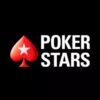In the realm of poker, the ability to accurately decipher an opponent’s hand strength is a critical skill that can greatly impact the outcome of a game. This article delves into the intriguing world of hand reading in poker, shedding light on the psychological factors that underpin its success.
Through astute observation, keen interpretation of behavioral cues, and a strategic understanding of deception and bluffing, players can gain valuable insights into their opponents’ intentions and potential hand strength.
Furthermore, the role of mindset, emotional control, and the interpretation of betting patterns are explored, providing valuable tools for compelling hand reading.

Key Takeaways
- Understanding psychological aspects: The article explores the importance of reading opponents’ body language, facial expressions, and betting patterns to gain valuable information about their hand strength.
- Importance of observation skills: Developing strong observation skills is crucial in effectively reading opponents’ behaviors and detecting any potential tells they might exhibit during a hand.
- Mindset and emotional control: The role of mindset and emotional control in hand reading is discussed, with tips provided on maintaining focus, managing emotions, and avoiding biases or distractions that can hinder accurate hand reading.
- Role of deception and bluffing: The psychology of deception and bluffing in poker is explained, highlighting how players can strategically misdirect and manipulate opponents’ perceptions to influence hand-reading.
Understanding Psychological Factors
An understanding of psychological factors is essential for successful hand reading in poker. Cognitive biases, nonverbal cues, subconscious tells, opponent profiling, and information gathering all play a significant role in accurately deciphering an opponent’s hand strength.
Cognitive biases, such as confirmation bias or the tendency to interpret information to confirm preexisting beliefs, can cloud judgment and hinder effective hand reading.
Nonverbal cues, such as body language and facial expressions, can provide valuable insights into an opponent’s emotional state and potential hand strength.
Subconscious tells, often involuntary and uncontrollable movements or actions, can betray hidden information about an opponent’s hand.
Profiling opponents based on their playing style, tendencies, and past actions can further enhance hand-reading capabilities.
Lastly, constantly gathering information through observation and analysis of betting patterns and actions is crucial for accurately assessing an opponent’s hand.
Importance of Observation Skills
Effective hand reading in poker relies heavily on honing strong observation skills. Reading opponents through their body language cues and non-verbal communication is crucial in accurately assessing their hand strength. Detecting tells, which are subtle behavioral indicators, can provide valuable insights into opponents’ intentions and the quality of their cards. Reading opponents requires a keen eye for detail and a deep understanding of behavioral analysis. By carefully observing how players act, speak, and interact at the poker table, skilled players can gather important information that helps them make informed decisions. To illustrate the importance of observation skills, consider the following table:
| Body Language Cue | Possible Interpretation |
|---|---|
| Nervous fidgeting | Weak hand, uncertainty |
| Confident posture | Strong hand, assertiveness |
| Inconsistent eye contact | Potential bluff, discomfort |
Mindset and Emotional Control
Developing a strong mindset and maintaining emotional control are crucial elements in successfully reading opponents’ hands in poker. Managing emotions plays a significant role in accurately interpreting behavioral cues and making rational decisions. Emotional regulation allows players to stay focused and avoid biases that may cloud their judgment.
To achieve mindset control, players must cultivate self-awareness and actively monitor their thoughts and feelings during gameplay. This involves recognizing and managing any negative emotions such as fear, frustration, or overconfidence, which can impair hand reading abilities.
Maintaining focus is also essential, as distractions can disrupt the ability to assess opponents’ hand strength accurately. By prioritizing emotional control and mindset management, players can enhance their hand reading skills and make more informed decisions at the poker table.
Role of Deception and Bluffing
How does the psychology of deception and bluffing influence successful hand reading in poker? Deception and bluffing play a crucial role in poker, allowing players to manipulate perceptions and strategically misdirect their opponents. By manipulating psychologically, players can influence their opponents’ hand-reading abilities and gain an advantage in the game. Reading nonverbal cues, such as body language and facial expressions, becomes essential in detecting potential bluffs and deciphering the truth behind opponents’ actions. Moreover, effective perception management allows players to control the image they project and deceive their opponents into making incorrect hand reading judgments. Through the art of deception and bluffing, skilled poker players can create uncertainty, keep their opponents off-balance, and ultimately improve their chances of winning.
| Keywords |
|---|
| Manipulating perceptions |
| Strategic misdirection |
| Psychological manipulation |
| Reading nonverbal cues |
| Perception management |

Interpreting Bet Sizing and Timing
The interpretation of bet sizing and timing is a crucial aspect of hand reading in poker. Bet sizing tells provides valuable information about an opponent’s hand strength. A large bet often indicates a strong hand, while a small bet may suggest a weaker hand or a bluff.
Timing tells involves observing the hesitation or speed with which an opponent makes their bet. A quick bet may indicate confidence, while hesitation could imply uncertainty. Reading hesitation can help in determining the strength of an opponent’s hand.
Additionally, players can use bet sizing and timing as strategic tools. An overbet strategy, where a player bets more than the pot size, can be used to intimidate opponents and extract maximum value from strong hands. Conversely, a small bet strategy can be employed to induce calls or bluffs from opponents.
Mastering the interpretation of bet sizing and timing can significantly enhance a player’s hand reading skills and overall success in poker.
Exploitative Vs. Theoretical Hand Reading
Bet sizing and timing can be utilized as strategic tools in both exploitative and theoretical hand reading approaches in poker. Exploitative hand reading involves tailoring strategies based on specific opponent tendencies, while theoretical hand reading relies on generalized strategies derived from population tendencies. To understand the nuances of exploitative vs theoretical hand reading, let’s examine the key factors involved in each approach:
| Exploitative Hand Reading | Theoretical Hand Reading |
|---|---|
| Player profiling | Adjusting strategies |
| Reading physical tells | Exploiting opponent tendencies |
| Adapting to different playing styles | – |
Exploitative hand reading requires in-depth player profiling and reading physical tells to exploit opponents’ tendencies. By adapting to different playing styles, players can adjust their strategies accordingly. On the other hand, theoretical hand reading focuses on adjusting strategies based on population tendencies rather than specific opponents. While exploitative hand reading can be highly effective against certain opponents, theoretical hand reading provides a more consistent approach against a broader range of players. Both approaches have their merits, and skilled players will incorporate elements of both to maximize their success in hand reading.
Developing Intuition and Pattern Recognition
To further enhance hand reading skills in poker, developing intuition and pattern recognition is crucial for players. Intuition allows poker players to make quick, intuitive decisions based on their knowledge and experience.
Pattern recognition, on the other hand, involves identifying recurring sequences of actions or behaviors that can provide valuable insights into an opponent’s hand strength.
To develop these skills, players can employ various training techniques. Reading body language is one effective method, as it can reveal unconscious signals and gestures that indicate the strength or weakness of a hand.
Analyzing betting patterns is another useful technique, as it helps players understand their opponents’ tendencies and adjust their strategy accordingly. Assessing risk tolerance is essential in hand reading, as players must gauge their opponents’ willingness to take risks and use this information to make informed decisions.
Lastly, identifying betting tells, such as subtle changes in demeanor or bet sizing, can provide valuable clues about an opponent’s hand.
Mental Game Strategies
In the realm of successful hand reading in poker, a key aspect to consider is the implementation of effective mental game strategies. These strategies can greatly enhance players’ ability to read their opponents’ hands and make informed decisions accurately.
Here are four essential mental game strategies that can be employed:
- Breathing techniques: By incorporating deep breathing exercises, players can calm their minds and regulate their emotions, enabling them to stay focused and make more apparent hand reading judgments.
- Visualization exercises: Visualizing different scenarios and outcomes can help players develop a sharper intuition and improve their ability to anticipate their opponent’s moves.
- Meditation practices: Regular meditation practice can enhance mental clarity, concentration, and self-awareness. This can be invaluable in hand reading, as it allows players to more accurately interpret their opponents’ behaviors and make more informed decisions.
- Positive self-talk: Maintaining a positive mindset and reinforcing confidence through self-talk can help players stay resilient in facing challenges and setbacks. This can improve their ability to read opponents’ hands and make better strategic decisions accurately.
Additionally, analyzing opponents’ verbal cues, such as their tone of voice, choice of words, and speech patterns, can provide valuable insights into their hand strength and intentions.
Incorporating these mental game strategies into one’s poker repertoire can greatly enhance hand reading abilities and overall success at the table.
Conclusion
In conclusion, successful hand reading in poker requires a comprehensive understanding of the psychological factors at play. This includes factors such as body language, facial expressions, and betting patterns. Strong observation skills and the ability to detect subtle behavioral cues are essential tools in accurately assessing an opponent’s hand strength.
Additionally, maintaining the right mindset, emotional control, and avoiding distractions are crucial for effective hand reading. These elements help to ensure that a player can focus on the information being presented by their opponent rather than being influenced by their own emotions or external factors.
The strategic use of deception and bluffing can also enhance the hand reading process. By intentionally misleading opponents with false signals or actions, players can manipulate their opponents’ perceptions and gain an advantage. Interpreting bet sizing and timing is another important aspect of hand reading. The size of a bet and the timing of its placement can provide valuable insight into an opponent’s hand strength or intentions.
Developing intuition and pattern recognition can significantly contribute to successful hand reading in poker. Through experience and practice, players can develop a sense of when certain patterns or behaviors indicate particular hand strengths or strategies.
Overall, successful hand reading in poker requires a combination of psychological understanding, observation skills, strategic thinking, and intuition. By honing these skills and continuously practicing, players can improve their ability to accurately assess their opponents’ hands and make more informed decisions during gameplay.


















